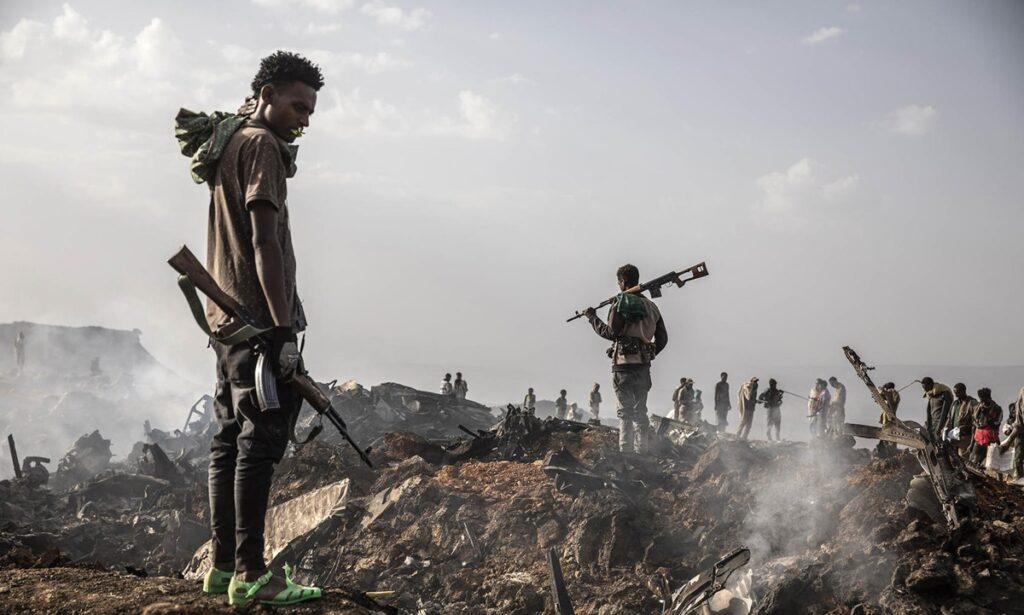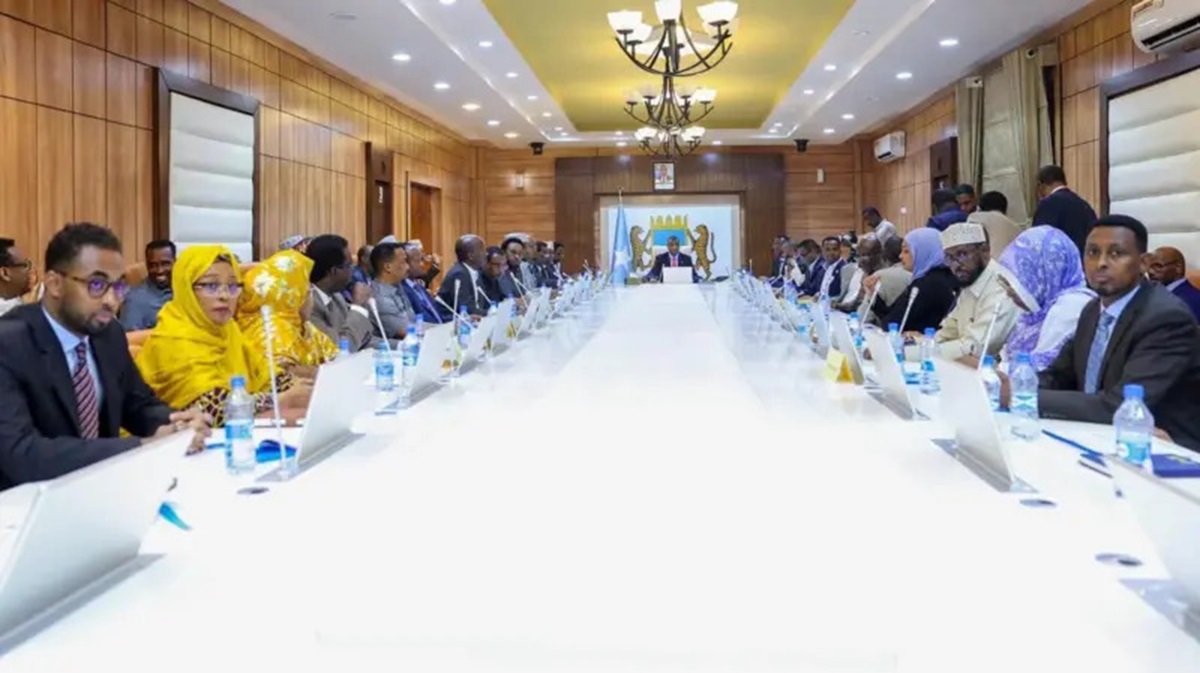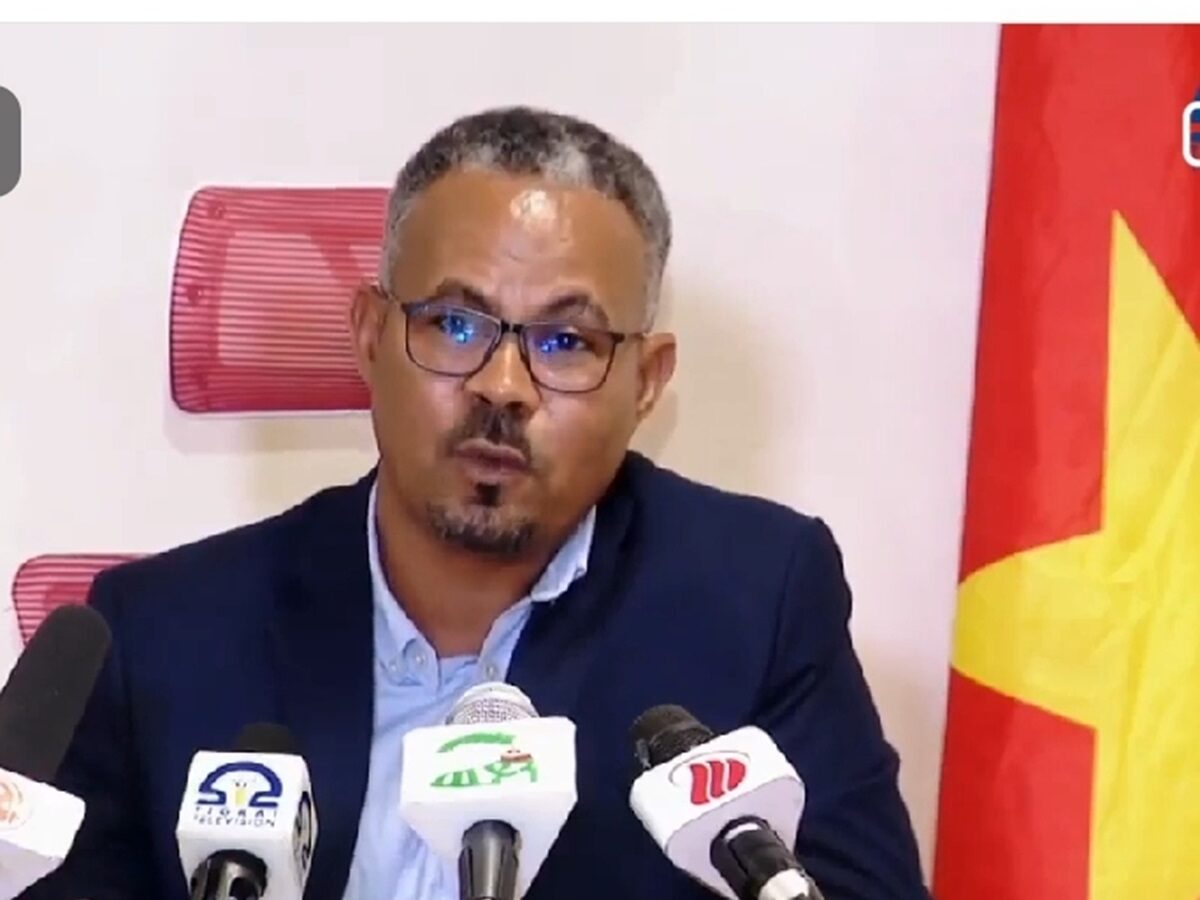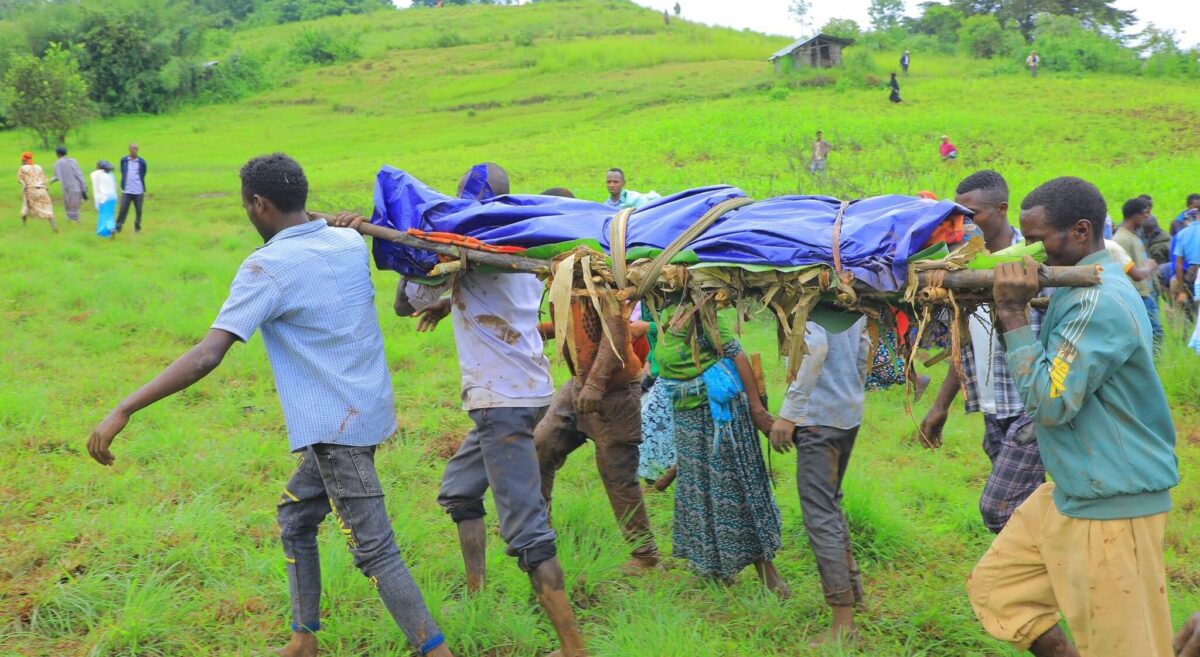
By Girma Gadissa
Introduction
It is not uncommon to see people in public spaces of Addis Ababa, schools or common seating areas or cafes, engaged in heated discussions on the causes and impacts of conflict in Ethiopia, all with hearts longing for peace. Not long ago, I was part of a similar discussion with a group of people from diverse religions, ethnic, and age groups. One of the points of the conversation was how over the years youth were consumed like firewood in prolonged violent conflicts in Ethiopia. The older ones shared their traumatizing memories of the Red Terror atrocities – dead bodies of young people left on the streets for days as the military prohibited the removal of the bodies to use them to deter others from standing in the way of the regime. Some recalled how parents who came out to collect the bodies of their children were asked to pay the price of the bullet used to kill their own flesh as if losing their child was not painful enough. It was estimated that more than 700,000 people, of which a significant majority were youth, were killed during the Red Terror and White Terror.
Ethiopian youth have been bearing the brunt of violent conflicts in the country. While youth are not a homogeneous group, and their experiences of conflicts vary, many of them are recruited into violent armed groups pulled and pushed by different factors. The transitions from one regime to another were tainted with the blood of thousands. Moreover, youth are disproportionately affected by the 2005 post-election violence and the 2016-2018 crackdown on public protests. University students have been targets of consecutive regimes’ attempts to suppress dissenting views. Despite the sacrifices youth make, the dream of seeing a peaceful Ethiopia is yet to come true, there is no end in sight to the series of conflicts. According to the Institute for Economics & Peace Global Peace Index 2023, from 163 countries, Ethiopia ranked 151. The recent conflict in Tigray and the ongoing conflicts in the Amhara and Oromia regions indicate that Ethiopia is still rolling in a vicious but avoidable circle of conflict. Many youths are still suffering from conflict atrocities.
It seems clear that ethnonationalism and competition over resources are driving the political elite towards conflict and they are using these narratives to mobilize youth for violence. I argue that the elite are still striving to answer questions from the early 60s and 70s that have already been addressed by legal and institutional frameworks set in place for ethno-nationalist demands. In this elite skirmish, newly emerged demands and needs of today’s youth are fully ignored: democratization, diversification of economic opportunities, youth economic empowerment, youth-focused peace initiatives, and meaningful youth participation. Today’s wars in Ethiopia, which have hundreds of thousands of youths engaged in violence, do not have these at their core.
Driving factors
Why do youth participate in violent conflict? Who and what pushes them to do so? Several factors, rooted in the political, economic, and historical situations of Ethiopia, have been driving youth into violent conflicts.
The first one is elite-driven militarized ethnonationalism. Ethiopia is a multi-ethnic, cultural, and linguistic state. However, historically, not all groups enjoyed equal opportunity to exercise their culture and language. Some suffered from inequality and injustice at the hands of the ruling classes who attempted to create a homogeneous society at the expense of diversity. The resistance against such socio-political order got prominence during the 1960s student movement followed by the establishment of ethnic-based liberation movements, especially in the 1970s. These efforts culminated in the current federal structure with a constitution that accommodates ethnolinguistic and cultural diversities. This is a positive step taken towards the recognition of diversity and the establishment of frameworks – legal and institutional – that address ethnonationalism quests in Ethiopia.
However, the federal structure was implemented in a very undemocratic way with the domination of the Tigray People’s Liberation Front at its core. Lack of transparency, accountability, meritocracy, and the rule of law as well as corruption, political exclusion, and centralized decision-making processes were and are prevalent. These have resulted in public resentment and intensified power struggles along ethnic lines within the ruling coalition. Elites within and outside the ruling parties have been mobilizing youth in their constituencies to stand for the cause of their respective ethnic groups which led to militarized ethnonationalism. This is evident from the increased militarization of “Fano” and “Qeerroo” or youths from other ethnic groups and the active participation in violent conflicts across the country. The ethnic undertone of conflicts is vivid.
What do elites use to mobilize youths? Usually, they use past and present ethnic grievances to mobilize youth. Of course, the elites wrap their greed within ethnic grievances. Youths’ resentment caused by bad governance provides fertile ground for such elites to incite violence. What we youth need to understand is that Ethiopia has a framework that addresses ethnic-related questions – the 1995 Constitution. The newly added regional states are testaments to the fact that the federal structure is continuously responding to evolving structural ethnic questions. Any further amendments to these frameworks could involve participatory paths with democracy at its core. Most importantly, violence cannot be a solution to any of the yet-to-be-addressed questions. Thus, my fellow youths should stop being a sacrificial lamb in vain for an already addressed question and aim at establishing another legacy i.e., democratization of the existing federal system.
Competition over resources, mainly over land, has been one of the persistent causes of conflict in many parts of Ethiopia. This is further exacerbated by disputed territorial boundaries, population growth, and the impacts of climate change. For instance, by 2050, Ethiopia’s population is projected to exceed 200 million with a median age of 25 which indicates youth predominance. Most resources are owned by few business people associated with government officials with little benefit to the people in the localities. Besides, corruption – grand and petty – has been damaging the economy and eroding trust in public institutions. Youth’s access to resources is very limited.
At times, the resource-driven conflicts take ethnic lines such as between Somali and Oromo, Konso and Derashe, Afar and Somali, and Amhara and Tigre, to mention a few. Commonly, youth are expected to step up and defend the interests of their groups including through violence. However, such violence will only turn regional boundaries into socio-economic margins, making it impossible for youth to cross regional boundaries to freely move, work and flourish. My fellow youth are global citizens who want to actively move within and outside of national boundaries seeking better opportunities. This can only be achieved in peaceful and secure environments.
Hopelessness caused by poverty and lack of opportunities are critical in pushing youths to join violent groups. The national economy is crippled by the cost of conflicts. In addition, inflation has kept growing and youth unemployment is also on the rise making the economic burden unbearable. Security deterioration is also affecting trade and investment across the country. Adding insult to injury, recently, kidnapping of people by armed groups and asking for unreasonably high ransom has become prevalent in Oromia. This not only sustained the groups but might also encourage youths to join the groups to escape economic hardship.
Suggested interventions
It should be underlined that violence cannot solve the challenges Ethiopian youth are facing. It rather aggravates them. Hence, what should be done to prevent youth from becoming involved in violent conflicts? The interventions suggested here are not exhaustive.
As argued in the previous section, one of the solutions to today’s challenges, whether of youth or otherwise, is participatory and inclusive governance (liberal democracy could be one form). Undemocratic practices, in governance, resource management or federalism have been a cause of conflict in Ethiopia for the last few decades. Only through ensuring democratic governance can Ethiopia reduce and gradually eliminate political and economic resentment caused by exclusion, discrimination, corruption, lack of transparency and accountability etc. The importance of widening the political space and fostering dialogue culture cannot be overemphasized. Even for those who disagree with the current federal system, democracy provides avenues to forward options they deem fit for Ethiopia. Diversifying ideas in the political market would minimize polarization and reduce violence. Therefore, democratic governance can be the foundation of peace for Ethiopia.
Moreover, there is a need to reconceptualize youth as agents of peace and recipients of security, not only as providers of security or threats to others safety, which have been the prevalent Ethiopian governments’ attitudes towards youth. To address immediate trends of violence, it is necessary to design and implement youth-centered peacebuilding initiatives including peace education. Organizing inter-ethnic youth-focused dialogue forums and training programs is of high importance in this regard. Peace education promotes knowledge and skills needed to build peace and ensures that youths reject resorting to violence to resolve conflicts. Youth-centered peace stretches from the local to the international and involves promoting dialogue (including intergenerational) at regional and national levels. Further, it requires addressing promotion of hate especially through social media through existing legal frameworks and combating illicit financial transactions funding violence including transnational financing.
Besides, creating the spirit of cooperation instead of competition over resources, is critical. This can further be augmented with economic diversification – variegation of means of livelihood including economic sectors – to address conflict induced by competition over resources. Boundaries should be clearly demarcated, especially in areas where ethnic element plays out in boundary-related competition over resources, yet they should not be “barriers” (as described by the African Union). Youth should be provided with productive spaces in their hometown and be able to move nationally and internationally as global citizens. More importantly, it is necessary to empower youth economically and address youth unemployment by providing sustainable vocational training, increasing access to finance, and creating an environment that encourages entrepreneurship. To reduce the high number of graduate unemployed youths, there is a need to strengthen university-industry linkages.
The primary obligation of addressing youth’s challenges and realizing their rights lies with the government. Political will is at the core of designing and implementing interventions that prevent youth from participating in violent conflict. However, the government can only do little alone. The hands of civil society organizations, religious institutions, media, development partners and inter-governmental organizations are very much needed.
To bring sustainable change in the lives of youths in Ethiopia, it is mandatory to ensure their meaningful participation in every decision that affects their lives. Often youth structures in Ethiopia serve the interests of the ruling parties, not the youth’s interests. That needs to change. The size of the youth population, the magnitude of challenges they face and the untapped potential they possess necessitates having a vibrant youth structure that echoes our voices in socio-economic and political decisions. Furthermore, the National Youth Policy should be revised to reflect and respond to the current realities and needs of youths.
Epilogue
During the informal chat mentioned in the beginning, although our perspectives differ on the causes of conflicts, who should be responsible and other related issues, we agreed that the youth’s potential that can be utilized to develop Ethiopia is wrongly channeled into bloody conflicts. This must change once and for all. By stock-taking lessons from the past and addressing the current challenges facing youth, it is possible to realize a peaceful Ethiopia – and hence create positive “memories for the future”. AS
Editor’s Note: Girma Gadisa Tufa is a human rights lawyer and researcher focusing on the African human rights system, transitional justice, peacebuilding and children’s rights. He holds a Master of Laws in Human Rights and Democratization in Africa from the University of Pretoria and a Master of Laws in Criminal Justice from the University of the Western Cape. Previously he had taught at Haramaya University. He can be reached at girmajm@gmail.com








